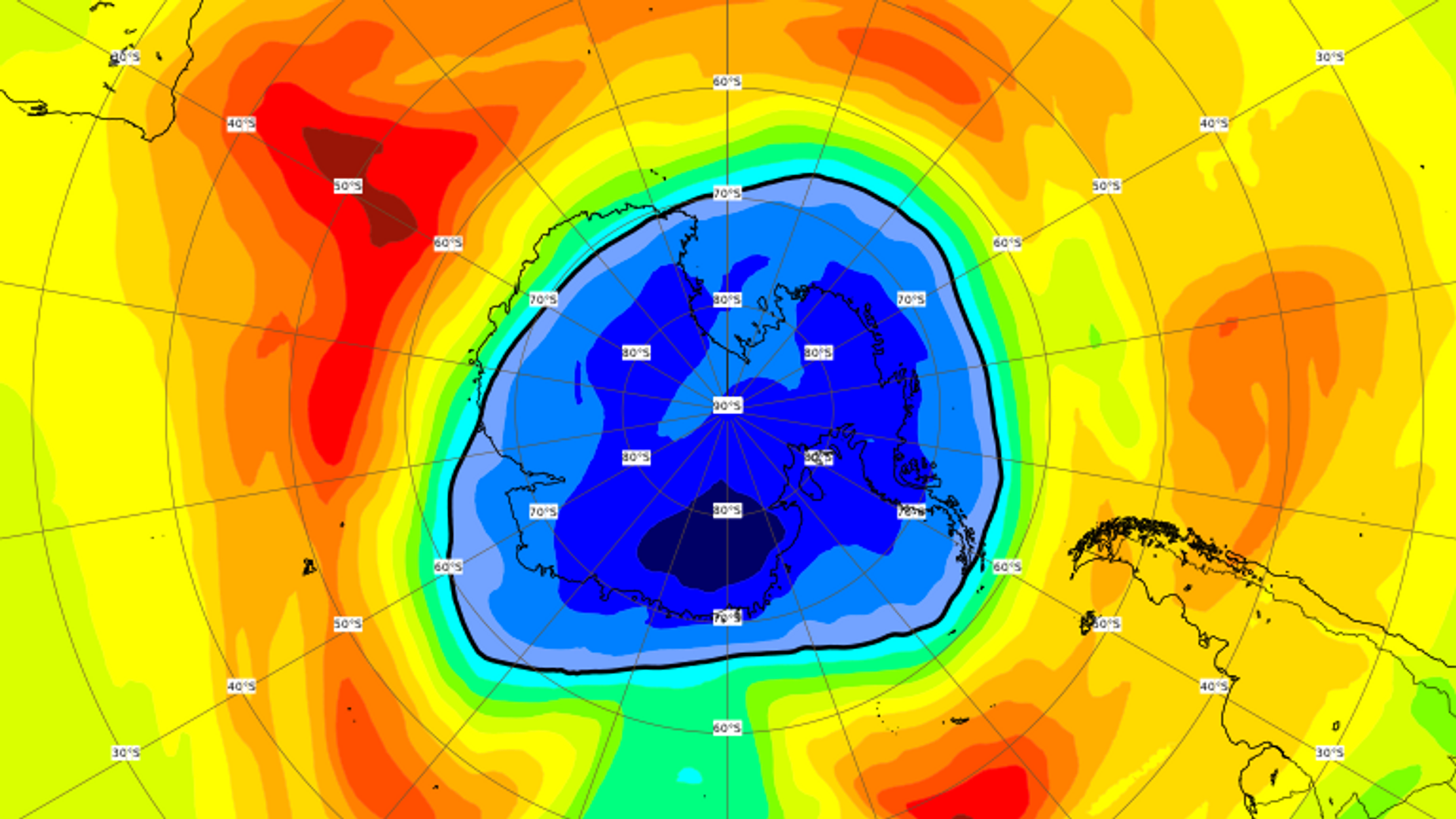Antarctic Ozone Hole Now 'Larger Than Usual', Covering Entire Continent, Scientists Say
01:36 GMT 18.09.2021 (Updated: 19:33 GMT 03.11.2022)

© Photo : Copernicus Atmosphere Monitoring Service
Subscribe
Ozone over the Antarctic region depletes through chemical reactions caused by solar energy every year during the Southern Hemisphere’s late winter, with the hole reaching its maximum size between mid-September and mid-October.
A hole in the Earth's ozone layer that develops every year is "rather larger than usual" and is currently larger than Antarctica, researchers from the Copernicus Atmosphere Monitoring Service (CAMS) revealed.
According to scientists, this year's hole is rapidly increasing and is greater than 75% of ozone holes at this point in the season since 1979.
"This year, the ozone hole developed as expected at the start of the season," said CAMS Director, Vincent-Henri Peuch. "It seems pretty similar to last year's, which also wasn't really exceptional until early September, but then turned into one of the largest and longest-lasting ozone holes in our data record later in the season."
As the European Space Agency stressed, this year's ozone hole appears to be similar in size to the 2020's, with a current area of roughly 23 million square km, larger than the whole of Antarctica.
"This ozone evolution is what we would expect given the current atmospheric conditions. The progress of the ozone hole over the coming weeks will be extremely interesting,” Antje Inness, a senior scientist at European Centre for Medium-Range Weather Forecasts, which operates the CAMS, is quoted as saying.
🌐The 2021's #OzoneHole has evolved into a rather larger than usual one. How do you think it sizes up next to other recent years? Compare it side-by-side with our decades-long record
— Copernicus ECMWF (@CopernicusECMWF) September 16, 2021
More on how the #CopernicusAtmosphere Monitoring Service tracks #ozone➡️https://t.co/U1k51lHMyp pic.twitter.com/mF0EzYTWDC
2021 - the ozone hole so far 🛰️🌎
— ESA EarthObservation (@ESA_EO) September 16, 2021
According to @CopernicusECMWF, the 2021 ozone hole has considerably grown in the last two weeks and is now larger than 75% of ozone holes at that stage in the season since 1979.
ℹ️ https://t.co/JqkLLcmFfM
📽️Size of the 2021 ozone hole#OzoneDay pic.twitter.com/3eMd3wVGUU
According to Peuch, the Antarctic ozone hole of 2021 has evolved into "a rather larger than usual one."
"The vortex is quite stable and the stratospheric temperatures are even lower than last year, so it may continue to grow slightly over the next two or three weeks,” he added.
According to Peuch, the ozone hole that appeared last year began innocuously enough, but went on to become one of the longest-lasting examples of the phenomena ever seen, eventually closing in late December.
Scientists note that the hole normally expands to a maximum area of around 20.7 million square km, in years with regular weather conditions.
Despite these natural variations, experts predict that the hole will close permanently by 2050 as a result of 1987 ozone-depleting chemical limitations under the Montreal Protocol.
In 2019, NASA reported the smallest ozone hole ever recorded, peaking at 16.4 million square km in early September, before shrinking to less than 10 million square km throughout the rest of September and October. However, in 2015 the meteorologic agencies recorded one of the largest and persistent ozone holes over the South Pole, with its vortex area reaching over 32 million square km.
The Earth's ozone layer is found in the stratosphere, about 11 to 40 kilometers above the Earth's surface, and works as a sunscreen for the globe, sheltering it from ultraviolet light, which can harm living cells.


